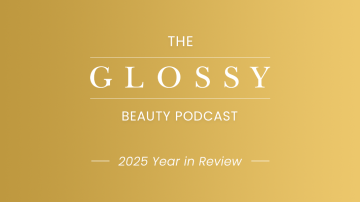Fwrd Group founder details how she’s advising brands ahead of the holidays
Digiday+ Research’s recently released holiday marketing report examines which commerce channels are dominating marketers’ 2025 holiday strategies. It also looks at the discounts brands and retailers are offering and the revenue expectations that are guiding their marketing decisions during the essential fourth quarter.
To gather this information, Digiday surveyed brand and retailer professionals and interviewed marketing executives. Amy Kapolnek, founder of the Fwrd Group, a growth consulting firm for independent brands, spoke with us at length. In this Q&A, she sheds light on the marketing strategies she advises clients to employ for the 2025 holiday season.
Digiday’s survey found that many brands and retailers have a conservative outlook on 2025 holiday revenue. Do you expect revenue from the upcoming holiday season to be better or worse than it was 2024? What is driving that perspective?
My take is that revenue will be flat to slightly up in comparison to 2024 — low single-digit growth at max. 2024 was up 4% from projections, which surprised everyone in the beauty industry and across CPG in general. However, with rising costs of living and tariffs — which will start to trickle down to the consumer right in time for the holiday season — consumers have less disposable income to spend, and so they are making extremely conscious decisions about where to spend that.
Will you be primarily targeting new or existing customers during the holiday season? And is that different from your usual approach?
Honestly, it’s both. But during the holidays I always tilt heavier toward new customers compared to the rest of the year. Holiday is one of the rare moments where consumer behavior naturally shifts — people are browsing, sampling and purchasing outside of their usual go-to brands. That inevitably creates an opportunity to drive trial [testing] at scale. For new customers, holiday is the perfect entry point. They’re either buying a gift and discovering the brand in the process, or they’re treating and stocking up for themselves, while shopping for others.
The play for existing customers looks a little different than for new customers. I’m careful not to just push more discounts at them because they’d likely buy anyway. Instead, I think in terms of value-adds — VIP early access, limited-edition kits or shades, expedited shipping or promos like “buy for yourself, gift one.” Those kinds of plays reward loyalty, but they also create new acquisition because loyal customers become the ones introducing the brand to others.
For new customers, there is an entire playbook we employ. I put a lot of energy into building strategic partnerships, both with influencers and with complementary brands, because those collaborations give reach and credibility without burning through budget. I also prioritize giftable sets and bundles on Amazon and DTC, which are huge for discovery and trial, especially in skincare where people might not buy a full-size product but will purchase a discovery kit or starter bundle.
What holiday strategies are you using this year?
For the last few years, I have launched a pre-holiday sale at the end of September or early October to capture more revenue rather than solely relying on Black Friday, Cyber Monday. For BFCM, we typically launch campaigns for a week, rather than a day or even a few days. Sometimes they are the week of Thanksgiving and Black Friday. Other times, they are the week before, with something of a smaller scale on Cyber Monday. There is so much noise during this time, but also consumers are extremely busy. It typically takes a week to reach the attention of customers and have them buy in.
The bottom line for the strategy portion is that we’re very disciplined about our promotional calendar. We don’t want to give away the horse and the cart, or dilute the brand value, by discounting it all the time. If brands chase “race-to-the-bottom” discounts, they’ll grow top-line revenue, but completely destroy their brand image and overall brand equity. We always play the value story, not just the percentage off [discount].
Which holiday strategies have historically performed the best for sales vs. brand awareness?
If a brand has retail doors, in-store activations with retail partners can be incredibly effective in driving sales. For certain brands, we’ve also used off-price or discovery-driven channels like TJ Maxx, QVC and FabFitFun very strategically — not just to move volume, but to elicit trial and awareness that can then ladder up into a brand-owned channel like DTC, or even Amazon.
If a brand has the budget, we lean into full-funnel paid media across social, Google and Amazon, as well as physical activations. Paid media is extremely expensive and it only kicks up more during the holidays. Every brand is always actively trying to decrease CAC [customer acquisition cost] and increase LTV [lifetime value], and paid media can do the opposite. … Consumers are extremely ad fatigued and also have a very limited attention span. The ads that actually break through are the ones that feel thumb stopping — creative that resonates with someone’s life, speaks to a need or problem, and tells the brand story in a way that feels fresh. That’s what leads consumers to check out the profile page and hit follow. From there, we utilize [automated chat platform] ManyChat to automatically send them a personalized welcome message.
I’m a huge advocate for brand activations because it allows the consumer to step into the brand — feel it in a way that shelves or screens can’t — while also possibly meeting them where they are, rather than relying on social media to find them. This connection and memorable experience from brand activations is what drives conversion and long-term loyalty.
And then, of course, there’s digital touchpoints: strong social media presence with seasonal storytelling; influencer content that frames products as holiday or gift-worthy; and email campaigns and flows that capture both gifting and self-purchase behavior. E-commerce plays a huge role here too — from optimized merchandising and offering bundles to seamless checkout, fast fulfillment and clear last-ship cutoffs.
I will add that customer service becomes a real differentiator. Quick response times, easy returns and thoughtful touches like gift receipts or handwritten notes can turn a one-time buyer into a loyal customer.
One caution note: it’s really easy to over-focus on new [customers] and unintentionally devalue your best customers. That’s where segmentation is absolutely crucial. If you separate your messaging — VIP early access for loyalists vs. heavy gifting or discovery language for new audiences — you avoid diluting the brand, while still driving revenue.
Digiday’s survey results found that some brands and retailers are moving away from Amazon. Is this something you are seeing as well?
I’m actually seeing the opposite. For my specific category, indie brands are really leaning in. And beauty, in general, on Amazon keeps expanding. From a category growth perspective, Amazon U.S. skincare revenue grew 21% year over year in 2024.
July Prime Day this year was absolutely massive. On top of that, Amazon is soon to be the leading platform for product discovery, even outranking Google. Between these two facts, Amazon is too big for any brand to ignore.
There is one slight caveat. I do not believe that it is beneficial for every brand to be on Amazon right now. Certain brands need more initial education, which Amazon cannot provide. However, it could be a sales channel [for them] down the road, once there is solid brand recognition.
The bottom line is that I’m not seeing an exodus. I’m seeing brands utilize Amazon in a much smarter way for starters, with an actual strategy, but more tangibly by offering exclusive products, bundles and sets, and integrating Amazon into their retail strategy that drives customers back to DTC.
What main sales channels are you using during the 2025 holiday season, and how does the usage differ from a non-holiday time period?
For holiday, the sales channels themselves don’t really change. We’re still leaning on DTC, Amazon and retail partners. What shifts is the funnel to channel, and the levels that we use them.
The other shift is operational. In Q2 or Q3, you might not worry about things like fulfillment speeds or return policies, but during the holidays they can make or break the customer experience. We know how inundated carriers get during the holidays. Often, there is nothing the brand can do. But, generally speaking, a delayed order or complicated return is a lost customer for life. On the opposite hand, a seamless process with a nice touch — like a gift receipt or an easy exchange — can make that seasonal shopper into a loyal customer.
In short, the channels are the same, but the funnel, the merchandising and the execution have to flex to meet holiday behavior.




